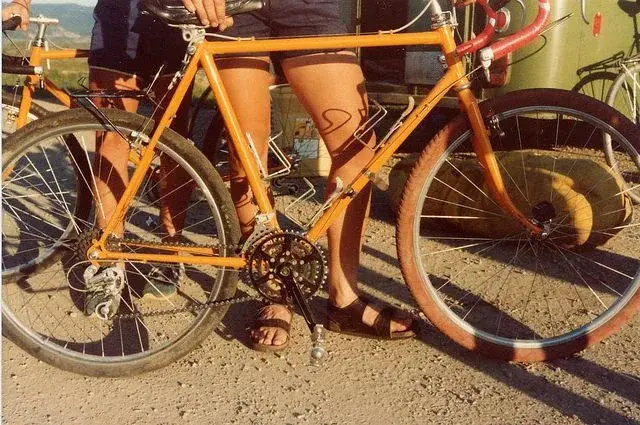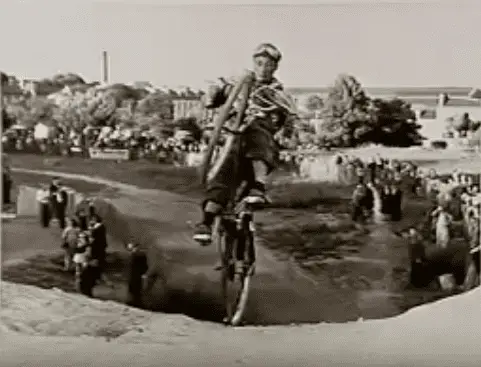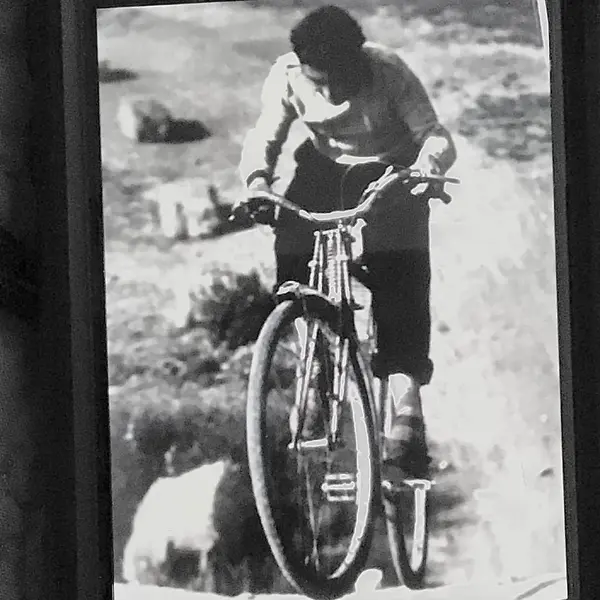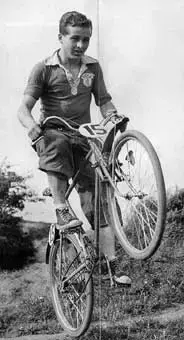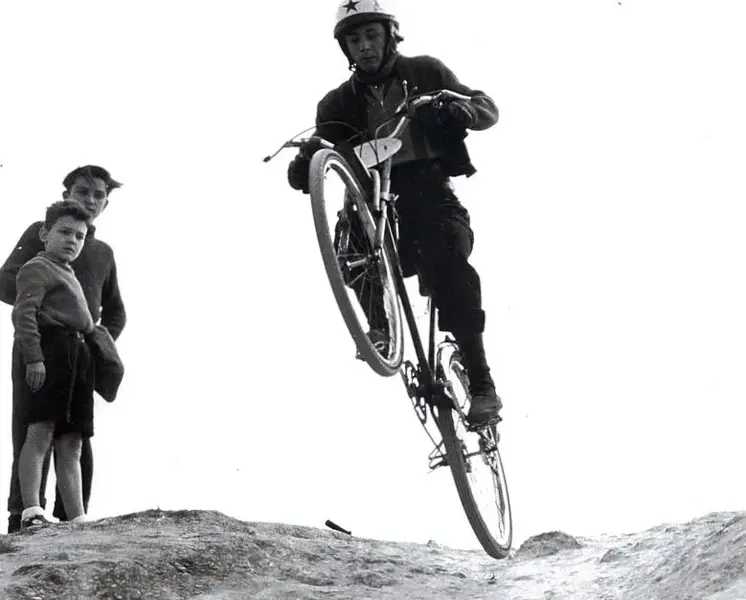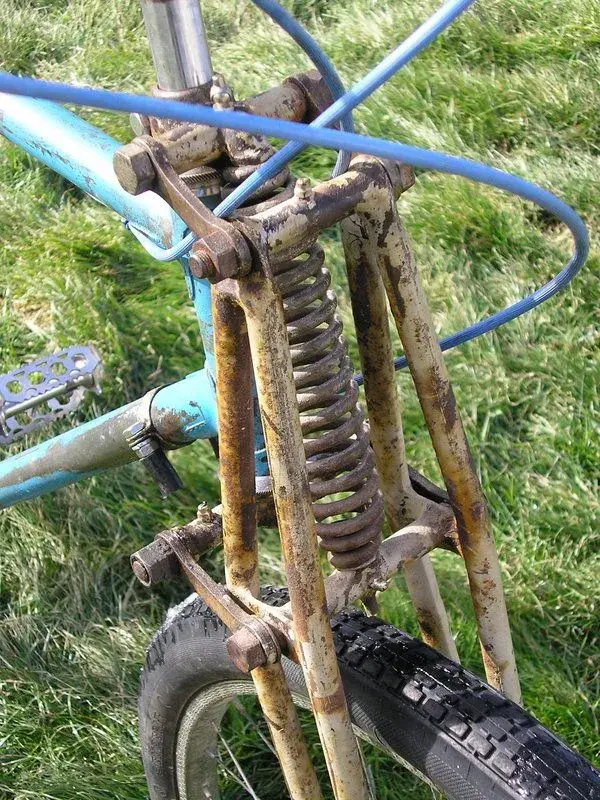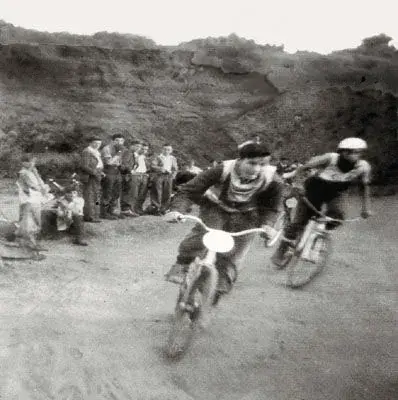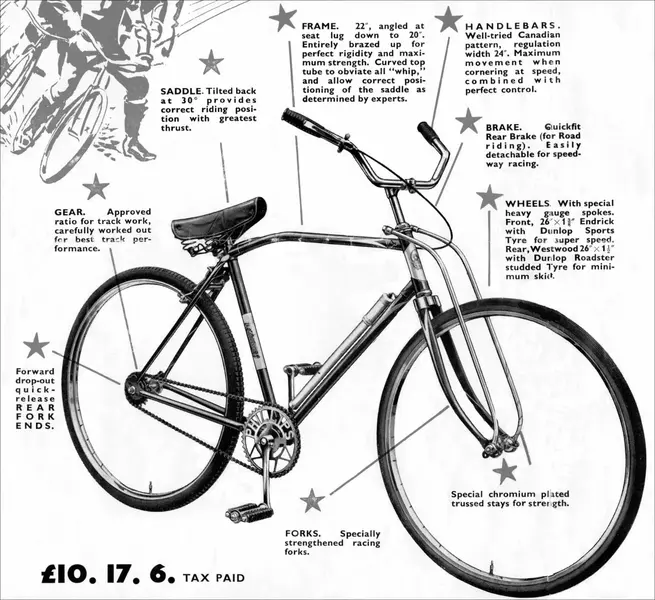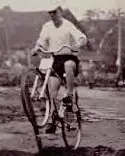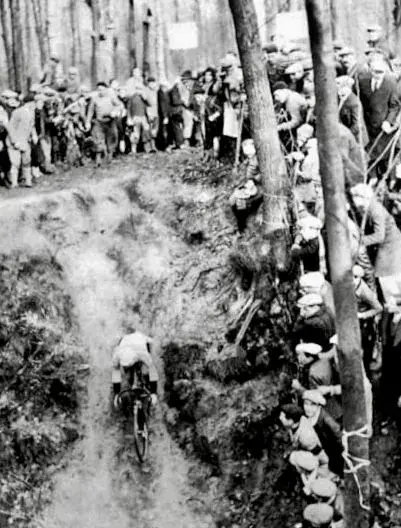Hi everyone…
Been reading this and other threads with interest.
I'm a member of the Rough-Stuff Fellowship and made two books featuring photos from their archive. The second book includes details of the links between the early mountain bikers in California and the Fellowship – Charlie Kelly, Gary Fisher and Holland Jones were members in the early 1980s.
John Finley Scott was also a member, and much earlier. In 1963 he contributed an article (attached here) to the club journal, which must be one of the earliest accounts of "rough-stuff" riding in the USA?
In that article he details a special rough-stuff bike he had made, built by Jim Guard in Southampton, UK, in 1961, with 650B wheels. I don't think this is his (Padgett-made?) "Woodsie" – that seems to have been made in 1953 according to MMBHOF (with a pic from the time).
This doesn't have any bearing on the Repack evolution, but thought I might be able to clear up some confusion over JFS that seems to have come from some inaccurate info in the various articles online on the subject…
He finishes by saying "Personally I expect rough-stuff riding to increase, because there are now many who are both cyclists and enthusiasts for remote regions and rough terrain. It is not unlikely that they will do as I have done and blend their interest in an American version of the British speciality."
Cheers
Max
Been reading this and other threads with interest.
I'm a member of the Rough-Stuff Fellowship and made two books featuring photos from their archive. The second book includes details of the links between the early mountain bikers in California and the Fellowship – Charlie Kelly, Gary Fisher and Holland Jones were members in the early 1980s.
John Finley Scott was also a member, and much earlier. In 1963 he contributed an article (attached here) to the club journal, which must be one of the earliest accounts of "rough-stuff" riding in the USA?
In that article he details a special rough-stuff bike he had made, built by Jim Guard in Southampton, UK, in 1961, with 650B wheels. I don't think this is his (Padgett-made?) "Woodsie" – that seems to have been made in 1953 according to MMBHOF (with a pic from the time).
This doesn't have any bearing on the Repack evolution, but thought I might be able to clear up some confusion over JFS that seems to have come from some inaccurate info in the various articles online on the subject…
He finishes by saying "Personally I expect rough-stuff riding to increase, because there are now many who are both cyclists and enthusiasts for remote regions and rough terrain. It is not unlikely that they will do as I have done and blend their interest in an American version of the British speciality."
Cheers
Max
